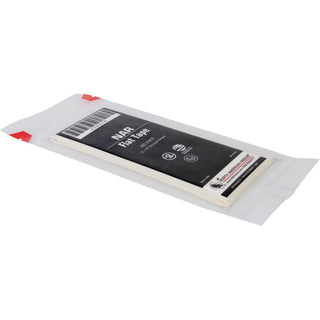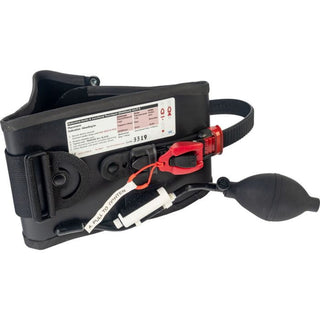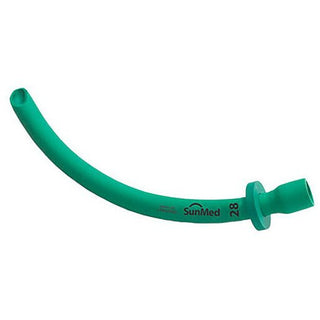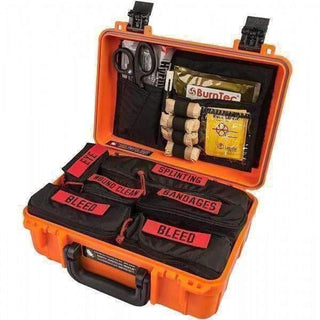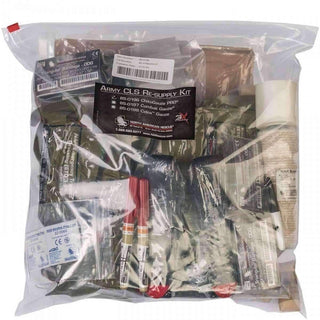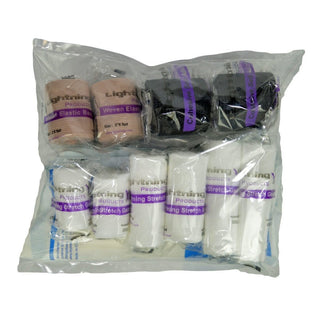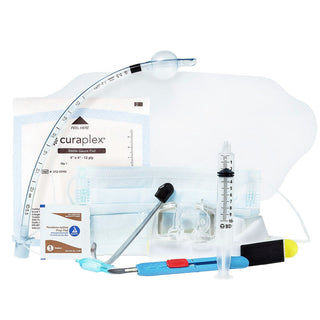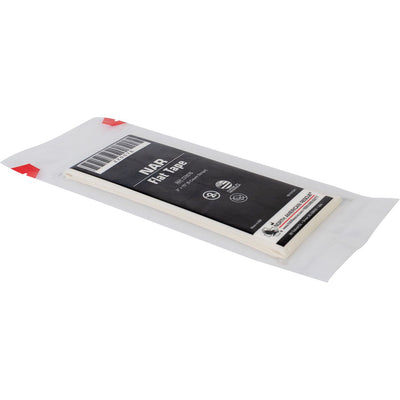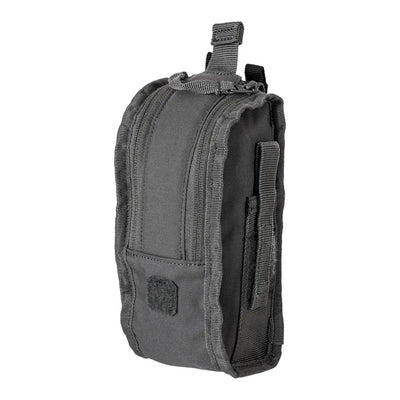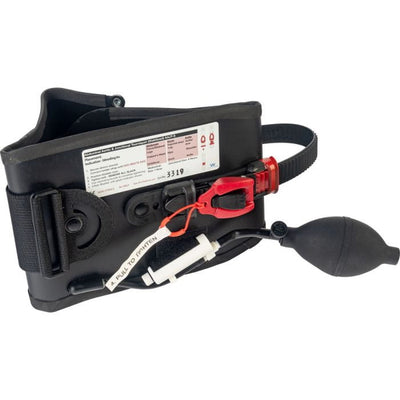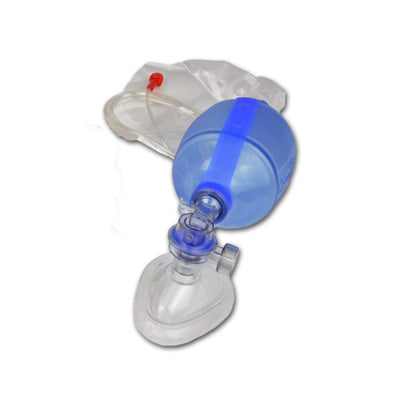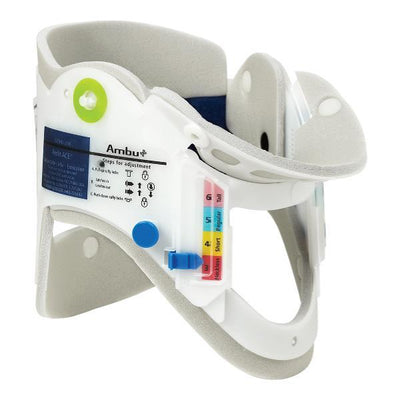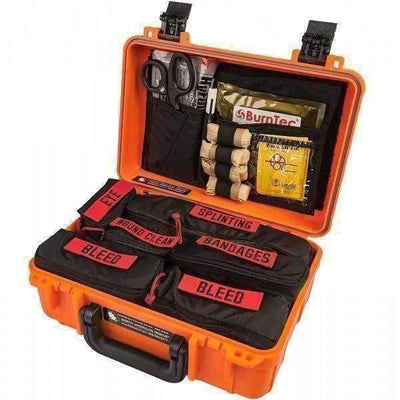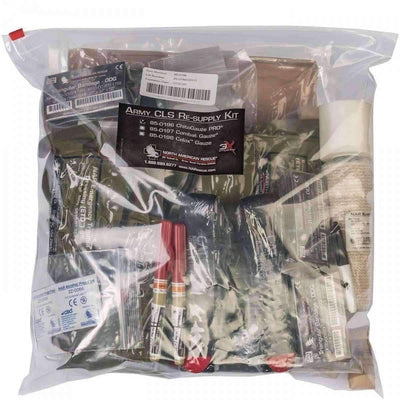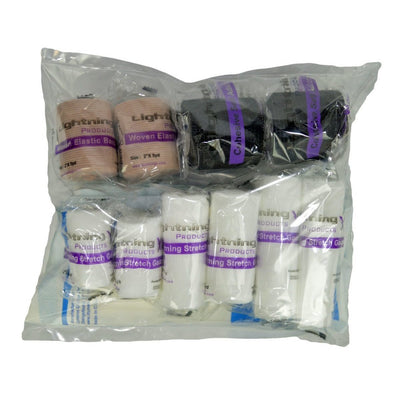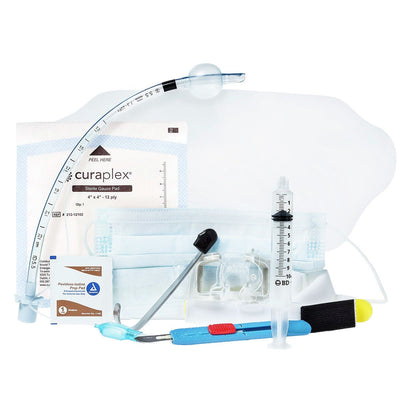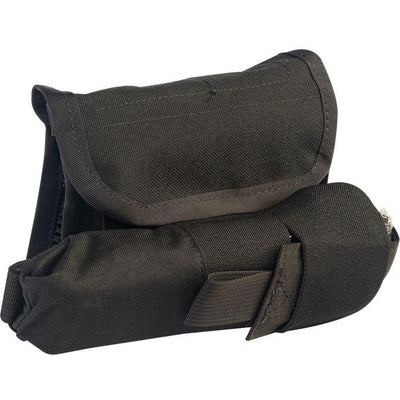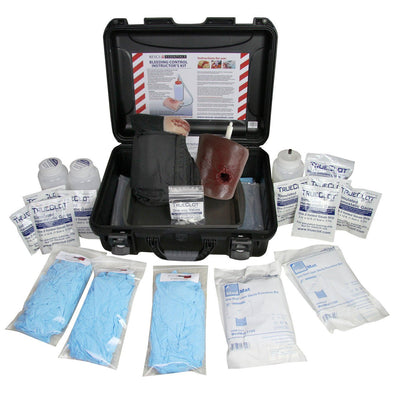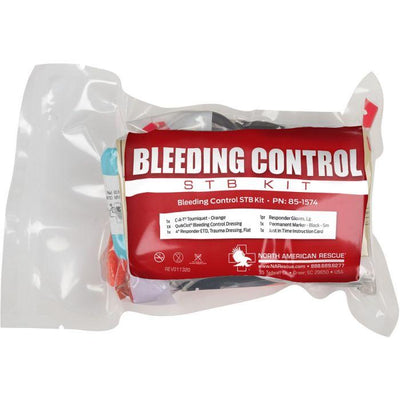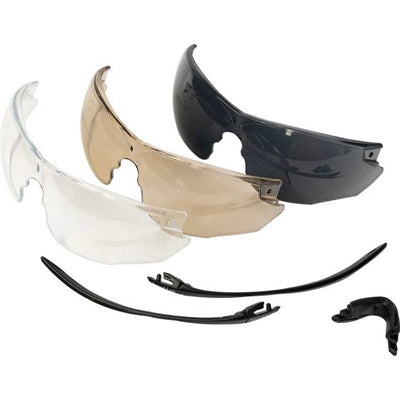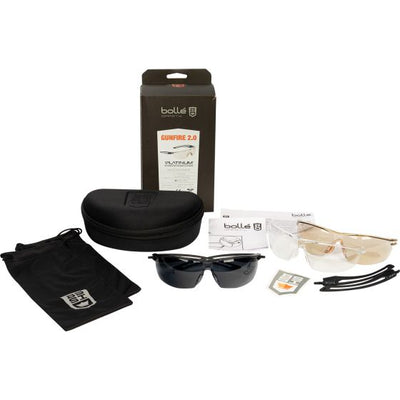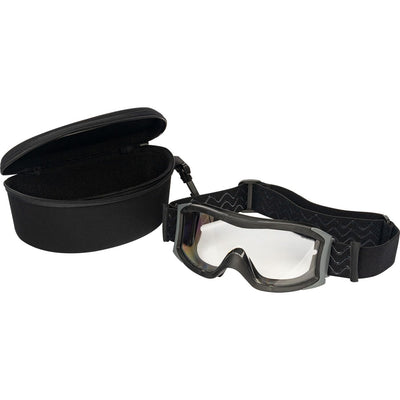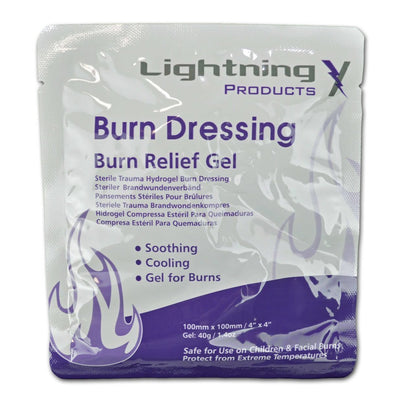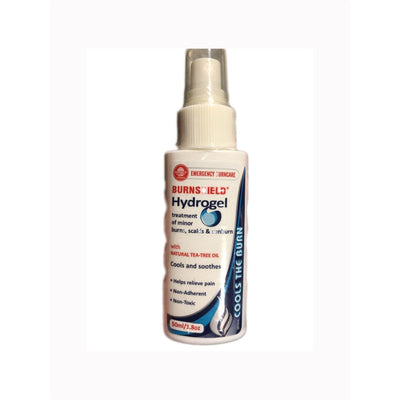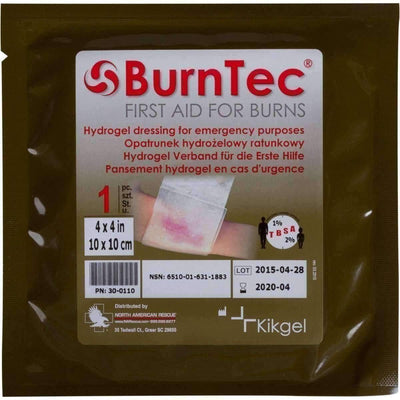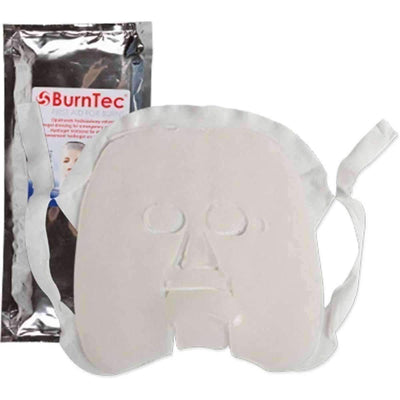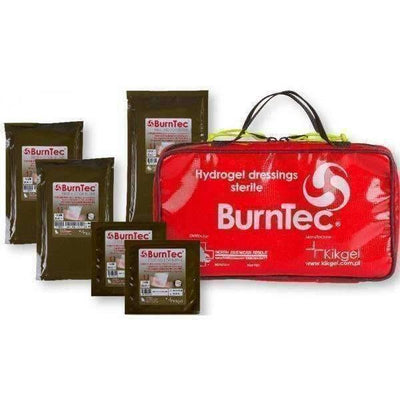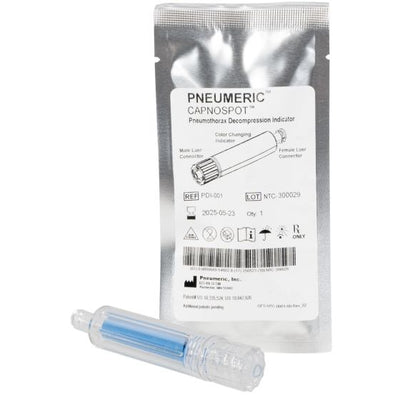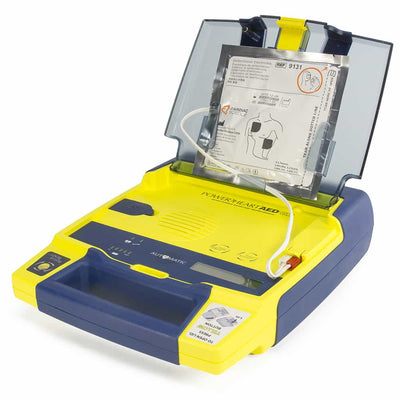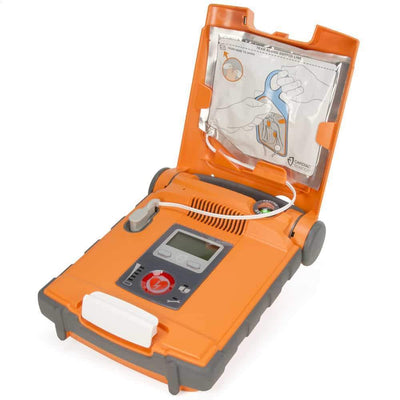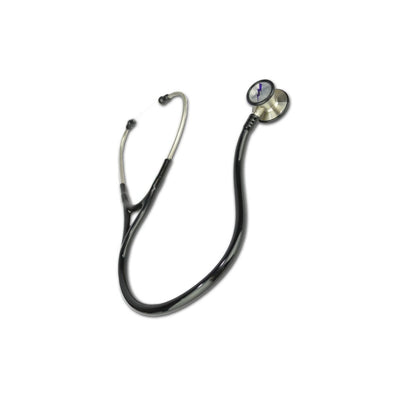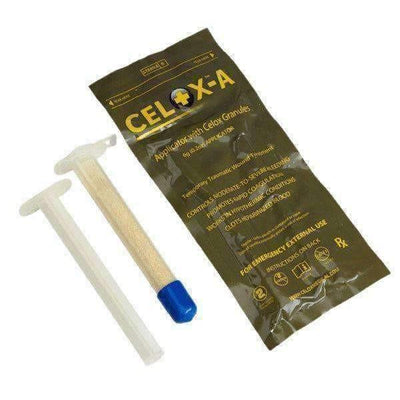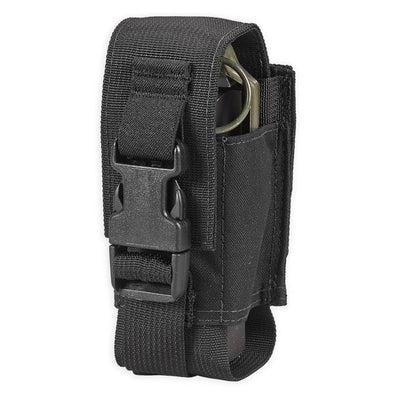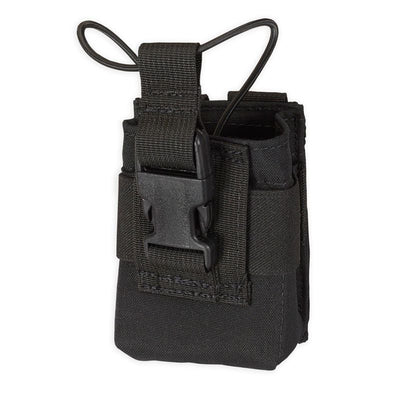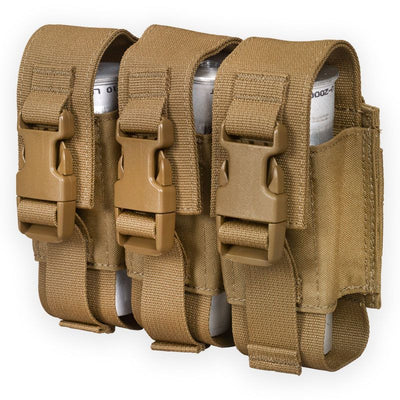 In line with our prior two months of voting, we are back again to ask for your help in choosing which two articles from the June Annals of EM issue will be open access. Take a look at the article abstracts accepted for publication in June’s issue. Vote on your top two choices over the next 4 days, and the top two will be made open after the June issue of Annals of Emergency Medicine goes online.
In line with our prior two months of voting, we are back again to ask for your help in choosing which two articles from the June Annals of EM issue will be open access. Take a look at the article abstracts accepted for publication in June’s issue. Vote on your top two choices over the next 4 days, and the top two will be made open after the June issue of Annals of Emergency Medicine goes online.
[polldaddy poll=7819399]
Association of Traumatic Brain Injuries with Vomiting in Children With Blunt Head Trauma (Original Research)
Peter S. Dayan, MD, MSc; James F. Holmes, MD, MPH; Shireen Atabaki, MD, MPH; John Hoyle Jr, MD; Michael G. Tunik, MD;
Richard Lichenstein, MD; Elizabeth Alpern, MD, MSCE; Michelle Miskin, MS; Nathan Kuppermann, MD, MPH; for the
Traumatic Brain Injury Study Group of the Pediatric Emergency Care Applied Research Network (PECARN)*
Study objective
We aimed to determine the prevalence of traumatic brain injuries in children who vomit after minor
blunt head trauma, particularly when the vomiting occurs without other findings suggestive of traumatic brain injury (ie,
isolated vomiting). We also aimed to determine the relationship between the timing and degree of vomiting and
traumatic brain injury prevalence.
Methods
This was a secondary analysis of children younger than 18 years with minor blunt head trauma. Clinicians
assessed for history and characteristics of vomiting at the initial evaluation. We assessed for the prevalence of clinically
important traumatic brain injury and traumatic brain injury on computed tomography (CT).
Results
Of 42,112 children enrolled, 5,557 (13.2%) had a history of vomiting, of whom 815 of 5,392 (15.1%) with
complete data had isolated vomiting. Clinically important traumatic brain injury occurred in 2 of 815 patients
(0.2%; 95% confidence interval [CI] 0% to 0.9%) with isolated vomiting compared with 114 of 4,577 (2.5%; 95% CI
2.1% to 3.0%) with nonisolated vomiting (difference –2.3%, 95% CI –2.8% to –1.5%). Of patients with isolated vomiting
for whom CT was performed, traumatic brain injury on CT occurred in 5 of 298 (1.7%; 95% CI 0.5% to 3.9%) compared
with 211 of 3,284 (6.4%; 95% CI 5.6% to 7.3%) with nonisolated vomiting (difference –4.7%; 95% CI –6.0% to –2.4%).
We found no significant independent associations between prevalence of clinically important traumatic brain injury and
traumatic brain injury on CT with either the timing of onset or time since the last episode of vomiting.
Conclusion
Traumatic brain injury on CT is uncommon and clinically important traumatic brain injury is very uncommon
in children with minor blunt head trauma when vomiting is their only sign or symptom. Observation in the emergency
department before determining the need for CT appears appropriate for many of these children.
Association of Unintentional Pediatric Exposures With Decriminalizaton of Marijuana in the United States
George S. Wang, Genie Roosevelt, Marie-Claire Le Lait, Erin M. Martinez, et al.
Study objective
We compare state trends in unintentional pediatric marijuana exposures, as measured by call volume to US poison centers, by state marijuana legislation status.
Methods
A retrospective review of the American Association of Poison Control Centers National Poison Data System was performed from January 1, 2005, to December 31, 2011. States were classified as nonlegal if they have not passed legislation, transitional if they enacted legislation between 2005 and 2011, and decriminalized if laws passed before 2005. Our hypotheses were that decriminalized and transitional states would experience a significant increase in call volume, with more symptomatic exposures and more health care admissions than nonlegal states.
Results
There were 985 unintentional marijuana exposures reported from 2005 through 2011 in children aged 9 years and younger: 496 in nonlegal states, 93 in transitional states, and 396 in decriminalized states. There was a slight male predominance, and the median age ranged from 1.5 to 2.0 years. Clinical effects varied, with neurologic effects the most frequent. More exposures in decriminalized states required health care evaluation and had moderate to major clinical effects and critical care admissions compared with exposures from nonlegal states. The call rate in nonlegal states to poison centers did not change from 2005 to 2011. The call rate in decriminalized states increased by 30.3% calls per year, and transitional states had a trend toward an increase of 11.5% per year.
Conclusion
Although the number of pediatric exposures to marijuana reported to the National Poison Data System was low, the rate of exposure increased from 2005 to 2011 in states that had passed marijuana legislation.
Avoiding Potential Harm by Improving Appropriateness of Urinary Catheter Use in 18 Emergency Departments (Original Research)
Mohamad G Fakih, MD, MPH; Michelle Heavens, RN, MHA; Julie Grotemeyer, BS; Susanna M Szpunar, MPH, DrPH; Clariecia Groves, MS; Ann Hendrich, RN, PhD
Objectives
Urinary catheters (UCs) are often placed in the emergency department (ED), and are associated with an increased safety risk for hospitalized patients. We evaluated the impact of an intervention to reduce unnecessary placement of UCs in the ED.
Methods
18 EDs from one health system underwent the intervention and established institutional guidelines for UC placement, provided education, and identified physician and nurse champions to lead the work. The project included baseline (7 days), implementation (14 days), and post-implementation (6 months, data sampled 1 day per month). Changes in UC use, indications for use, and presence of physician order were evaluated comparing the 3 periods.
Results
13215 sampled patients admitted through the ED were evaluated, with 891 (6.7%, 95% CI 6.3%-7.2%) having a catheter placed. Newly placed catheters dropped from 309/3381 (9.1%) baseline, compared to 424/6896 (6.1%) implementation (delta 3.0%, 95% CI 1.9%-4.1%), and 158/2938 (5.4%) post-implementation periods (delta 3.8%, 95% CI 2.5%-5.0%). The appropriateness of newly placed UCs improved from baseline (228/308, 74%), compared to implementation (385/421, 91.4%; delta 17.4%; 95% CI 11.9%-23.1%), and post-implementation periods (145/158, 91.8%; delta 23.9%; 95% CI 18%-29.3%). Physician order documentation in the presence of the urinary catheter was 785/889 (88.3%) with no visible change over time. Improvements were noted for different size hospitals, and were more pronounced for hospitals with higher UC placement baseline.
Conclusion
The implementation of institutional guidelines for UC placement in the ED, coupled with the support of clearly identified physician and nurse champions, is associated with a reduction in unnecessary UC placement. The effort has a substantial potential of reducing patient harm hospital wide
Clinical Utility of Screening Laboratory Tests in Pediatric Psychiatric Patients Presenting to the Emergency Department for Medical Clearance
J.Joelle Donofrio, Genevieve Santillanes, Bradley D. McCammack, Chun Nok Lam, et al.
Study objective
We assess whether screening laboratory tests obtained to medically clear pediatric psychiatric patients altered management or disposition.
Methods
This was a retrospective chart review of consecutive patients younger than 18 years and presenting to an academic pediatric emergency department for medical clearance of an acute psychiatric emergency potentially requiring an involuntary hold (danger to self, danger to others, grave disability) from July 2009 to December 2010. Patients were identified by discharge diagnosis codes. History and physical examination and screening laboratory tests were reviewed for changes in management or disposition. Further analysis compared length of stay according to type of laboratory test performed. To avoid missing patients presenting with or for evaluation of an involuntary hold for whom an organic cause was diagnosed, charts with psychiatric chief complaints were reviewed for the same period.
Results
One thousand eighty-two visits resulting in 13,725 individual laboratory tests were analyzed. Of 871 visits with laboratory tests performed, abnormal laboratory tests were associated with 7 disposition changes (0.8%) and 50 management changes (5.7%) not associated with a disposition change. Twenty-five patients with noncontributory history and physical examination results had management changes, all non-urgent. One patient with a noncontributory history and physical examination result had a disposition-changing laboratory result, a positive urine pregnancy test. Patients who had anyscreening test performed had a longer length of stay than patients without testing (117 minutes longer; 95% confidence interval 109.7 to 124.4 minutes). In charts reviewed according to chief complaint, no patient was found to have an organic cause of their symptoms according to only screening tests.
Conclusion
Screening laboratory tests resulted in few management and disposition changes in patients with noncontributory history and physical examination results but were associated with increased length of stay.
Clinicians need to implement all aspects of the current sepsis bundles, not just the ones they like
Sukhjit S. Takhar, Raghu Seethala, MD
Do Corticosteroids Benefit Patients With Sore Throat?
Julie L. Welch, Dylan D. Cooper
Does Initial Hydromorphone Relieve Pain Best if Dosing Is Fixed or Weight Based?
Shujun Xia, Dong Choe, Lenin Hernandez, Adrienne Birnbaum
Study objective
It remains unknown whether initial opioid dosing should optimally be fixed or weight-based. We wish to determine whether pain response after an initial fixed dose of intravenous hydromorphone varied by total body weight.
Methods
We enrolled a convenience sample of emergency department adults aged 18 to 65 years with acute pain requiring intravenous opioids and administered 1 mg of hydromorphone. Our primary outcome was the correlation of total body weight with the reduction in pain at 30 minutes, as measured with a numeric rating scale. Our secondary outcomes contrasted total body weight by other measures of efficacy (numeric rating scale <3, pain relief, satisfaction, and desire for more analgesics) and adverse events (nausea, vomiting, and pruritus). We also performed a multivariate analysis to control for variables that might affect the relationship of pain response to total body weight.
Results
We enrolled 163 subjects with a range of weights from 45 to 157 kg, and their mean numeric rating scale pain reduction at 30 minutes was 5.3. Pain reduction did not correlate with weight in either univariate or multivariable models. Secondary outcomes were also similar, except greater pruritus in lower-weight subjects.
Conclusion
Pain response to a fixed 1 mg intravenous dose of hydromorphone did not vary by total body weight in this sample of adults aged 18 to 65 years, suggesting no advantage to weight-based over fixed opioid dosing.
The Effect of Electronic Health Record Implementation on Community Emergency Department Operational Measures of Performance
Michael J. Ward, Adam B. Landman, Karen Case, Jessica Berthelot, et al.
Study objective
We study the effect of an emergency department (ED) electronic health record implementation on the operational metrics of a diverse group of community EDs.
Methods
We performed a retrospective before/after analysis of 23 EDs from a single management group that experienced ED electronic health record implementation (with the majority of electronic health records optimized specifically for ED use). We obtained electronic data for 4 length of stay measures (arrival to provider, admitted, discharged, and overall length of stay) and 4 measures of operational characteristics (left before treatment complete, significant returns, overall patient satisfaction, and provider efficiency). We compared the 6-month “baseline” period immediately before implementation with a “steady-state” period commencing 6 months after implementation for all 8 metrics.
Results
For the length of stay measures, there were no differences in the arrival-to-provider interval (difference of –0.02 hours; 95% confidence interval [CI] of difference –0.12 to 0.08), admitted length of stay (difference of 0.10 hours; 95% CI of difference –0.17 to 0.37), discharged length of stay (difference of 0.07 hours; 95% CI of difference –0.07 to 0.22), and overall length of stay (difference of 0.11 hours; 95% CI of difference –0.04 to 0.27). For operational characteristics, there were no differences in the percentage who left before treatment was complete (difference of 0.24%; 95% CI of difference –0.47% to 0.95%), significant returns (difference of –0.04%; 95% CI of difference –0.48% to 0.39%), overall percentile patient satisfaction(difference of –0.02%; 95% CI of difference –2.35% to 2.30%), and provider efficiency (difference of –0.05 patients/hour; 95% CI of difference –0.11 to 0.02).
Conclusion
There is no meaningful difference in 8 measures of operational performance for community EDs experiencing optimized ED electronic health record implementation between a baseline and steady-state period.
Emergency Department Avoidance by Transgender Persons: Another Broken Thread in the “Safety Net” of Emergency Medicine Care
John F. Brown, Jonathan Fu
The FLUSH Study—Flush the Line and Ultrasound the Heart: Ultrasonographic Confirmation of Central Femoral Venous Line Placement
Russ Horowitz, Jeffrey G. Gossett, John Bailitz, David Wax, et al.
Study objective
Inadvertent arterial placement of a femoral venous catheter may result in serious morbidity, including limb necrosis. The Flush the Line and Ultrasound the Heart (FLUSH) test is visualization of the heart by a subxiphoid ultrasonic view while the central catheter is flushed with agitated saline solution. We wish to determine whether the FLUSH test can verify proper femoral venous line placement.
Methods
We prospectively studied a convenience sample of children undergoing cardiac catheterization, for whom both femoral venous and arterial access were part of their standard care. The cardiologist flushed manually agitated saline solution through each catheter in randomized sequence while the blinded physician sonographer recorded the presence or absence of right atrial opacification. We calculated the sensitivity and specificity of the FLUSH test relative to our reference standard, the cardiologist’s fluoroscopic visualization of catheter wire placement.
Results
Of the 51 subjects enrolled, the FLUSH test was 100% sensitive (95% confidence interval 95% to 100%) and 90.3% specific (95% confidence interval 81% to 96%) in confirming femoral catheter placement. In no case was an arterial flush misidentified as a femoral flush. The interrater reliability of the test was strong: κ 0.82 for all images and 0.9 for those of good quality.
Conclusion
The FLUSH test is simple and reliable, and appears to accurately confirm femoral venous line placement.
Incidence of Clinically Important Biphasic Reactions in Emergency Department Patients With Allergic Reactions or Anaphylaxis
Brian E. Grunau, Jennifer Li, Tae Won Yi, Robert Stenstrom, et al.
Study objective
Allergic reactions are common presentations to the emergency department (ED). An unknown proportion of patients will develop biphasic reactions, and patients are often monitored for prolonged periods to manage potential reactions. We seek to determine the incidence of clinically important biphasic reactions.
Methods
Consecutive adult patients presenting to 2 urban EDs with allergic reactions during a 5-year period were identified. Encounters were dichotomized as “anaphylaxis” or “allergic reaction” with an explicit algorithm. A comprehensive chart review was conducted on each index and all subsequent visits to detail patient presentations, comorbidities, ED management, and predefined clinically important biphasic reactions. Regional and provincial databases were linked to identify subsequent ED visits and deaths within a 7-day period. The primary outcome was the proportion of patients with a clinically important biphasic reaction, and the secondary outcome was mortality.
Results
Of 428,634 ED visits, 2,819 (0.66%) encounters were reviewed (496 anaphylactic and 2,323 allergic reactions). Overall, 185 patients had at least 1 subsequent visit for allergic symptoms. Five clinically important biphasic reactions were identified (0.18%; 95% confidence interval [CI] 0.07% to 0.44%), with 2 occurring during the ED visit and 3 postdischarge. There were no fatalities (95% CI 0% to 0.17%). In the anaphylaxis and allergic reaction groups, clinically important biphasic reactions occurred in 2 patients (0.40%; 95% CI 0.07% to 1.6%) and 3 patients (0.13%; 95% CI 0.03% to 0.41%), respectively.
Conclusion
Among ED patients with allergic reactions or anaphylaxis, clinically important biphasic reactions and fatalities are rare. Our data suggest that prolonged routine monitoring of patients whose symptoms have resolved is likely unnecessary for patient safety.
Medical Clearance: Time for This Dinosaur to Go Extinct
Thomas H. Chun
A Non-Inferiority Randomized Controlled Trial Comparing the Clinical Effectiveness of Anesthesia Obtained by Application of a Novel Topical Anesthetic Putty With the Infiltration of Lidocaine for the Treatment of Lacerations in the Emergency Department
Mark G. Jenkins, Diarmaid J. Murphy, Carol Little, Julie McDonald, et al.
Study objective
We test the hypothesis that anesthesia, measured as pain scores, induced by a novel topical anesthetic putty is non-inferior (margin=1.3) to that provided by conventional lidocaine infiltration for the repair of lacerations.
Methods
A randomized controlled trial was conducted in the emergency department (ED) of a local hospital. Participants were randomly allocated to receive either infiltration anesthesia or topical anesthetic putty as per the trial protocol. Pain scores were recorded 15 minutes after infiltration and 30 minutes after topical anesthetic putty application. Median pain scores were compared between groups. Wound evaluation scores were conducted after 7 to 10 days and adverse events were monitored for both groups of participants throughout the study.
Results
One hundred and ten participants were enrolled in the study, with 56 receiving infiltration and 54 receiving topical anesthetic putty. The median difference between the pain scores of the 2 groups was 0 (95% confidence interval –1 to 0). There were no substantial differences between the 2 groups in terms of either the wound evaluation scores or the incidence of adverse events.
Conclusion
The novel topical anesthetic putty was not inferior to infiltration with lidocaine with respect to the pain experienced during suturing, and this putty is a feasible alternative to infiltration anesthesia of lacerations in the ED.
Are Proton-Pump Inhibitors Effective Treatment for Acute Undifferentiated Upper Gastrointestinal Bleeding?
Jennifer C. Cabot, Kaushal Shah
Reported Emergency Department Avoidance, Use, and Experiences of Transgender Persons in Ontario, Canada: Results From a Respondent-Driven Sampling Survey
Greta R. Bauer, Ayden I. Scheim, Madeline B. Deutsch, Carys Massarella
Study Objective
Transgender, transsexual or transitioned (trans) people have reported avoiding medical care based on past negative experiences or fear of such experiences. The extent of trans-specific negative emergency department (ED) experiences, and of ED avoidance, have not been documented.
Methods
The Trans PULSE Project conducted a survey of trans people in Ontario, Canada (n=433) in 2009-2010 using respondent-driven sampling, a tracked network-based method for studying hidden populations. Weighted frequencies and bootstrapped 95% confidence intervals were estimated for the trans population in Ontario, and for the subgroup (n=167) reporting ED use in their felt gender.
Results
408 participants completed the ED experience items. Trans people were young (34% age 16-24 and only 10% >55 years); approximately half were female-to-male and half male-to-female. Medically-supervised hormones were used by 37% (95% CI: 30-46) and 27% (95% CI: 20-35) had at least one transition-related surgery. Past-year ED need was reported by 33% (95% CI: 26-40) of trans Ontarians, though only 71% (95% CI: 40-91) of those with self-reported need indicated that they were able to obtain care. An estimated 21% (95% CI: 14-25) reported ever avoiding ED care due to a perception that their trans status would negatively impact such an encounter. Trans-specific negative ED experiences were reported by 52% (95% CI: 34-72) of users presenting in their felt gender.
Conclusions
This first exploratory analysis of ED avoidance, utilization and experiences by trans persons documented ED avoidance and possible unmet need for emergency care among trans Ontarians. Additional research, including validation of measures, is needed.
Safety of Intranasal Fentanyl in the Out-of-Hospital Setting: A Prospective Observational Study
Anders P.H. Karlsen, Danny M.B. Pedersen, Sven Trautner, Jørgen B. Dahl, et al.
Background
Initial prehospital analgesia is sometimes hampered by difficulties in achieving intravenous access or lack of skills in administering intravenous opioids. We studied the safety profile and apparent analgesic effect of intranasal fentanyl in the pre-hospital setting.
Methods
In this prospective observational study we administered intranasal fentanyl in the prehospital setting to adults and children above 8 years with severe pain resulting from orthopaedic conditions, abdominal pain, or acute coronary syndrome refractory to nitroglycerin spray. Patients received one to three doses of either 50 or 100 mg and the ambulance crew recorded adverse effects and numeric rating scale (0-10) pain scores before and after treatment.
Results
Our 903 evaluable patients received a mean cumulative fentanyl dose of 114 mg (range 50-300 mg). There were no serious adverse effects and no use of naloxone. Thirty-six patients (4%) experienced mild adverse effects: mild hypotension, nausea, vomiting, vertigo, abdominal pain, rash, or decrease of Glasgow Coma Score to 14. The median reduction in pain score was 3 (IQR 2-5) after fentanyl administration.
Conclusion
The prehospital administration of intranasal fentanyl in doses of 50 to 100 mg is safe and appears effective.
Are Short-Term Late-Generation Antibiotics Equivalent to Standard Penicillin Therapy in the Resolution of Symptoms in Acute Strep Throat in Children?
Anand Swaminathan, Jeffrey Hom
Trial to Examine Text Message-Based mHealth in Emergency Department Patients With Diabetes (TExT-MED): A Randomized Controlled Trial (Original Research)
Sanjay Arora, MD;Anne L Peters; Elizabeth Burner, MD MPH; Chun Nok Lam, MPH; Michael Menchine, MD MPH
Objective
Increasingly, low-income, inner city patients with diabetes utilize emergency departments for acute and chronic care. We sought to determine whether a scalable, low-cost, unidirectional text message based mobile health intervention (TExT-MED) improves clinical outcomes, increases healthy behaviors, and decreases emergency department utilization in a safety net population.
Methods
We conducted an RCT of 128 adult patients with poorly controlled diabetes (HbA1C≥8%) in an urban, public emergency department. The TExT-MED group received two daily text messages for six months in English or Spanish. The primary outcome was change in HbA1C. Secondary outcomes included changes in medication adherence, self-efficacy, performance of self-care tasks, quality of life, diabetes specific knowledge, emergency department utilization, and patient satisfaction.
Results
HbA1C decreased by 1.05% in the TExT-MED group compared with 0.60% in the controls (∆0.45 (95%CI -0.27-1.17) at six months. Secondary outcomes favored the TExT-MED group with the most sizable change seen in self-reported medication adherence (as measured by the MMAS – an 8 point validated scale with higher scores representing better adherence), which improved from 4.5 to 5.4 in the TExT-MED group compared with a net decrease of -0.1 in the controls (∆1.1 (95%CI 0.1-2.1)). Effects were larger among Spanish speakers for both medication adherence (1.1 vs. -0.3,∆1.4 (95%CI 0.2-2.7)) and HbA1C (-1.2% vs. -0.4%) in the TExT-MED group. The proportion of patients who utilized emergency services trended lower in the TExT-MED group (35.9% vs. 51.6%,∆15.7% (95%CI 9.4-22%)). Overall, 93.6% of respondents enjoyed TExT-MED and 100% would recommend it to family/friends.
Conclusions
The TExT-MED program did not result in a statistically significant improvement in HbA1C. However, trends toward improvement in the primary outcome of HbA1C and other secondary outcomes including quality of life were observed,the most pronounced being improved medication adherence. TExT-MED also decreased emergency department utilization. These findings were magnified in the Spanish-speaking subgroup. Technologies such as TExT-MED represent highly scalable, low-cost and widely accessible solutions for safety-net emergency department populations.
Un-Bundling Early Sepsis Resuscitation (Clinical Controversies)
Alan Edward Jones, MD
Is the Use of Haloperidol a Safe and Effective Method of Tranquilization for Patients With Psychosis-Induced Aggression or Agitation?
Adam Chandler, Rachael Freeze-Ramsey, Rawle Anthony Seupaul
Author information
The post Vote which Annals of EM articles to be open-access in June appeared first on ALiEM.















